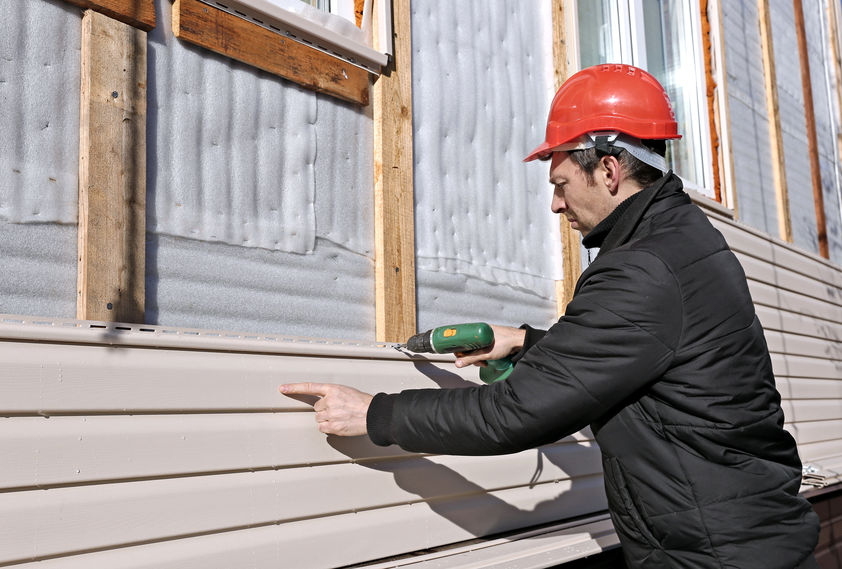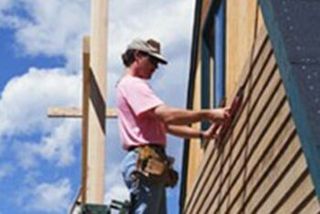Top-Rated Morris Siding Contractor Offering Expert Installation Services
The Crucial Guide to the Numerous Types of Exterior Siding and Their Unique Benefits
In the realm of home improvement, selecting the appropriate exterior siding is a vital choice that affects both aesthetic charm and useful efficiency. With so many choices to take into consideration, which home siding product truly stands out for your details job?
Wood Exterior Siding
Wood exterior siding, a prominent choice for property exteriors, offers a timeless aesthetic that combines all-natural charm with structural honesty. This home siding product is offered in different styles, consisting of clapboard, tiles, and board-and-batten, allowing home owners to tailor their façade to match their design preferences. Wood home siding is generally crafted from sturdy varieties such as cedar, redwood, or ache, which are understood for their durability and capacity to withstand environmental stressors.
One of the primary advantages of timber house siding is its outstanding insulation residential or commercial properties, which can add to energy efficiency and lower heating prices. Additionally, timber house siding is biodegradable, making it an eco-friendly choice when sourced sustainably. Routine maintenance, including painting or staining, can prolong its life expectancy and improve its look, permitting house owners to maintain the natural charm of the wood.
However, possible drawbacks consist of sensitivity to insects, rot, and weather condition damages, demanding ample treatment and maintenance - morris siding contractor. Regardless of these issues, when effectively looked after, timber exterior siding can offer a durable and attractive service that enhances the personality of a home while offering a cozy, inviting ambience

Vinyl Exterior Siding
Vinyl home siding has actually become a leading selection for home owners seeking a low-maintenance exterior alternative that integrates sturdiness and affordability. This versatile material is crafted from polyvinyl chloride (PVC), making it immune to various weather conditions, including dampness and UV rays. Consequently, plastic house siding does not warp, rot, or discolor, guaranteeing resilient aesthetic appeal.
Among the main benefits of vinyl exterior siding is its considerable variety of shades and styles, enabling homeowners to attain the preferred search for their building without the requirement for frequent repainting. Additionally, plastic house siding is very easy to set up, which can substantially minimize labor expenses during building or remodelling tasks.
Vinyl siding additionally adds to power effectiveness. Several alternatives function insulation support, which improves thermal efficiency, aiding to preserve comfy interior temperatures and possibly lowering energy bills. Its smooth surface assists in simple cleansing, calling for just routine washing with a garden hose pipe to remove dirt and debris.
Fiber Cement Exterior Siding
Fiber cement exterior siding has acquired grip amongst property owners and building contractors alike because of its exceptional mix of resilience and aesthetic convenience. Made up of a blend of cellulose, cement, and sand fibers, this home siding choice is engineered to withstand extreme climate condition, consisting of high winds, heavy rain, and temperature level variations, making it a resilient selection for household exteriors.

Among the primary advantages of fiber cement siding is its resistance to parasites, such as termites, and its non-combustible nature, offering improved fire safety and security. morris siding contractor. Furthermore, it is readily available in a broad selection of textures, colors, and designs, enabling house owners to attain their wanted visual without sacrificing efficiency
An additional advantage is its low upkeep demands; fiber concrete house siding normally calls for painting or discoloration every 5-10 years, which is less constant than various other materials. Moreover, its get redirected here durability contributes to a reduced overall expense of possession, as it lowers the need for frequent repairs or replacements.
Eventually, fiber cement home siding stands for a superb investment for those seeking a resilient, attractive, and versatile exterior choice, integrating both type and feature to improve the home's visual charm.
Metal Exterior Siding
The appeal of metal home siding lies in its robust resilience and modern-day visual charm, making it a preferred option for contemporary design. Available in materials such as aluminum and steel, steel house siding supplies an array of colors and coatings, permitting house owners to accomplish an individualized look that click to find out more complements their design vision.

Energy efficiency is one more considerable advantage, as many metal home siding products are developed with insulation alternatives that assist regulate indoor temperatures. This can cause minimized energy expenses in time. Furthermore, metal exterior siding is usually recyclable, making it an eco pleasant selection for sustainability-minded house owners.
The setup process for metal exterior siding can be fairly straightforward, resulting in a quicker turn-around time for building and construction tasks. Generally, metal exterior siding integrates functionality and style, making it a sensible alternative for those seeking a enduring and visually enticing outside finish.
Block and Rock Exterior Siding
Brick and rock house siding sticks out as a timeless choice that boosts the aesthetic beauty of any type of home. Known for their sturdiness and low upkeep, these materials give an exceptional click roi while raising the home's curb allure. Offered in numerous colors, appearances, and patterns, brick and rock can be tailored to match diverse building styles, from typical to contemporary.
One of the key advantages of brick and stone siding is their power efficiency. Both products possess natural shielding properties that assist manage interior temperatures, potentially lowering cooling and heating expenses. Furthermore, they supply superior fire resistance compared to other home siding alternatives, adding to enhanced security.
Another benefit is their durability. Brick and stone can last for years, usually requiring minimal upkeep past periodic cleansing. Unlike timber house siding, they are impervious to pests and rot, guaranteeing a lasting exterior that stands up to the elements.
Conclusion
In summary, the selection of exterior siding substantially affects a home's visual charm, energy efficiency, and upkeep demands. Each kind of exterior siding-- whether wood, vinyl, fiber metal, cement, or block and rock-- provides distinct benefits customized to numerous property owner preferences and environmental problems. Comprehending these options enables educated choices that improve both the longevity and aesthetic appeal of household exteriors. Ultimately, picking the ideal exterior siding is important for accomplishing a balance between capability and style in residential style.
One of the primary advantages of wood home siding is its excellent insulation homes, which can add to power performance and lower heating prices. Additionally, wood house siding is biodegradable, making it an eco friendly alternative when sourced sustainably.One of the primary advantages of steel siding is its resistance to different ecological elements.Power performance is one more substantial benefit, as many metal home siding items are designed with insulation options that assist manage indoor temperatures. Each kind of house siding-- whether timber, vinyl, fiber concrete, block, or steel and rock-- supplies one-of-a-kind benefits tailored to various property owner preferences and environmental conditions.